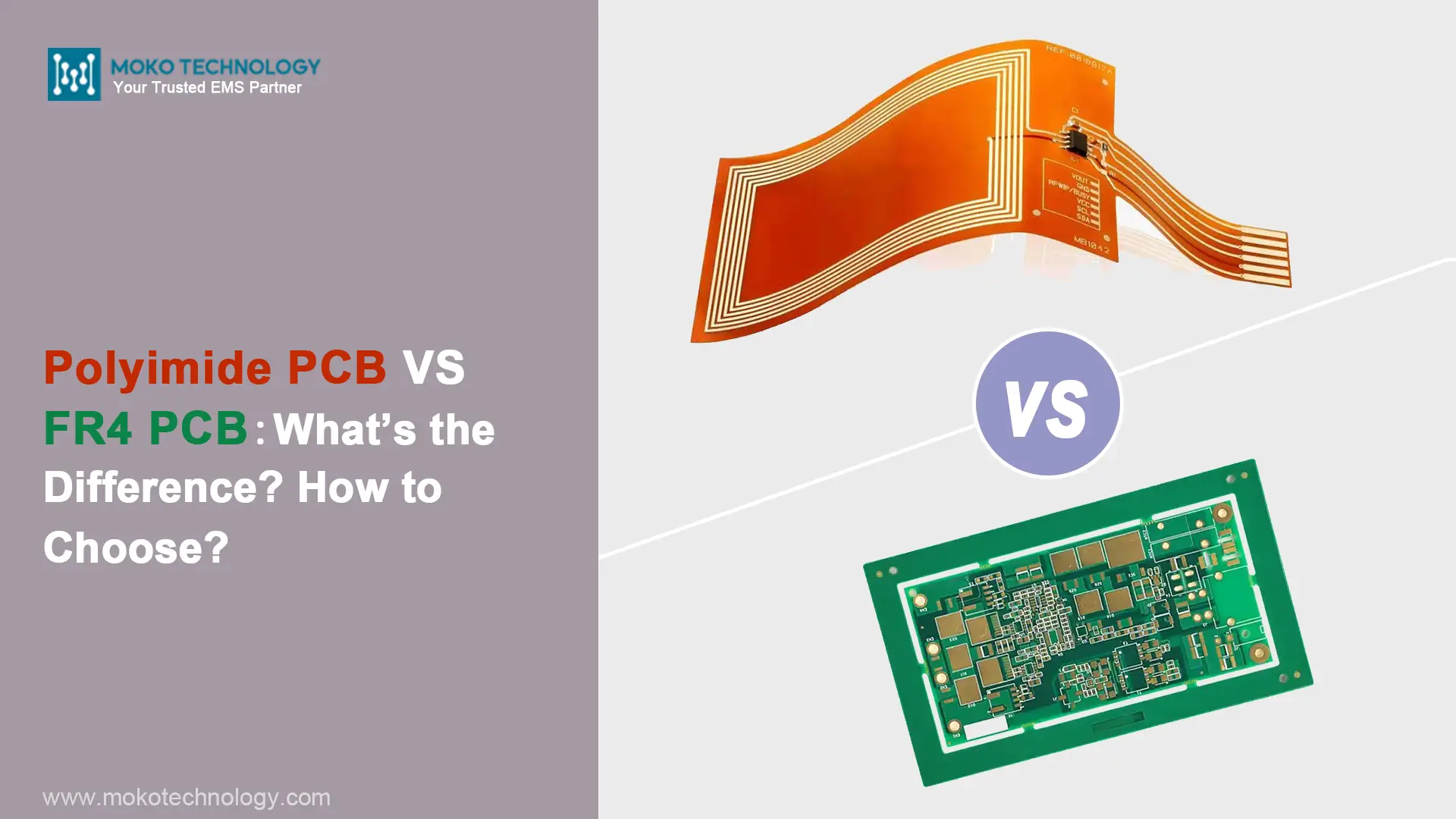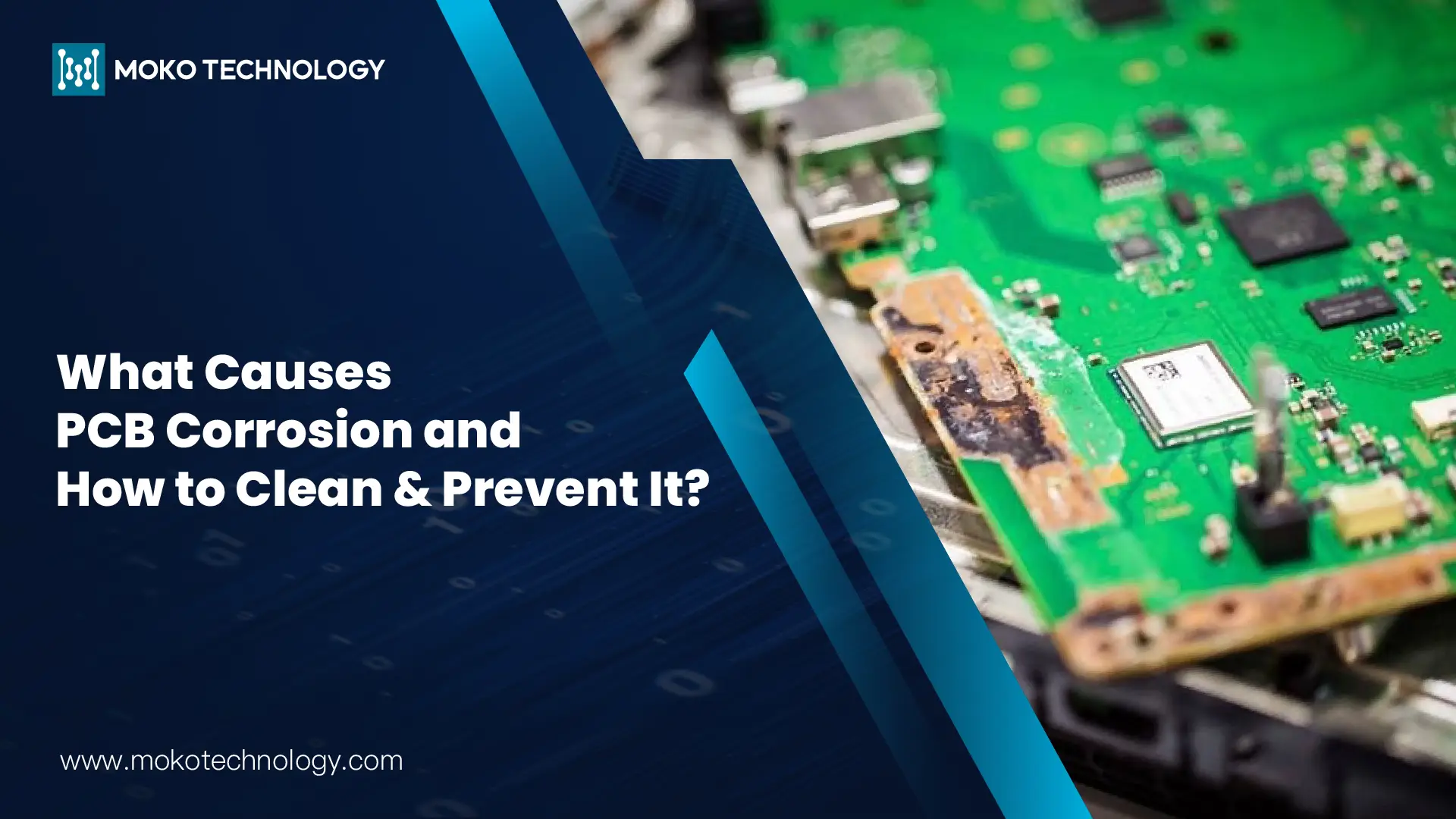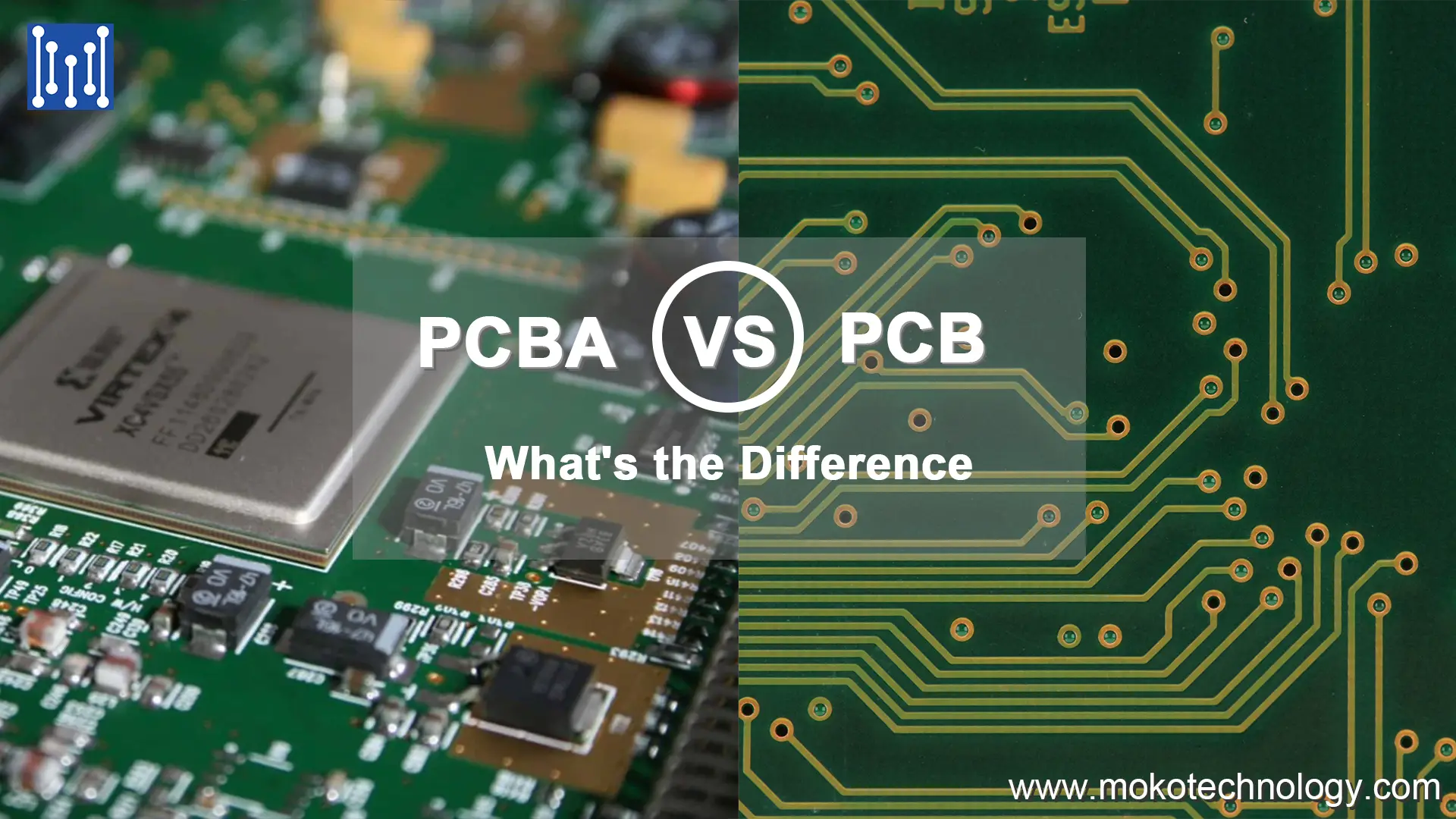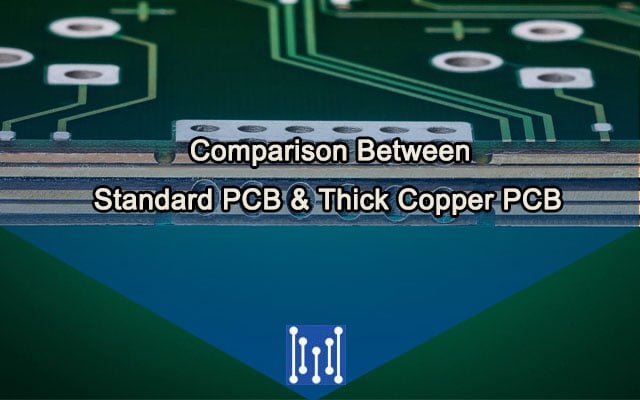Polyimide PCB and FR4 PCB are two of the most prevalent used PCB types. Though both are polymer substrates well-suited for PCBs, Polyimide and FR4 each possess their own distinct characteristics that make them more appropriate for certain settings over others. In this blog, we explain their key differences and provide insights on how to choose between them. Let’s read on.
Differences between Polyimide PCB and FR4 PCB
- Copper Types
Most FR4 boards use electrodeposited copper foils with a vertical grain structure optimized for rigid boards. Polyimides more commonly use rolled annealed copper designed specifically to withstand repeated flexion without metal fatigue or cracking. The orientation of the copper grain also matches the flexing axis for maximum durability.
- Construction
FR4 is made up of epoxy resin, layers of woven fiberglass, and copper. The number of fiberglass layers determines the overall thickness. The fibers are saturated with epoxy then cured with the copper layers under heat and pressure to form the rigid board. In contrast, polyimide boards contain only polyimide plastic polymer and copper. The polyimide is cast onto the copper foils in liquid form, then fully cured to a solid, flexible state.
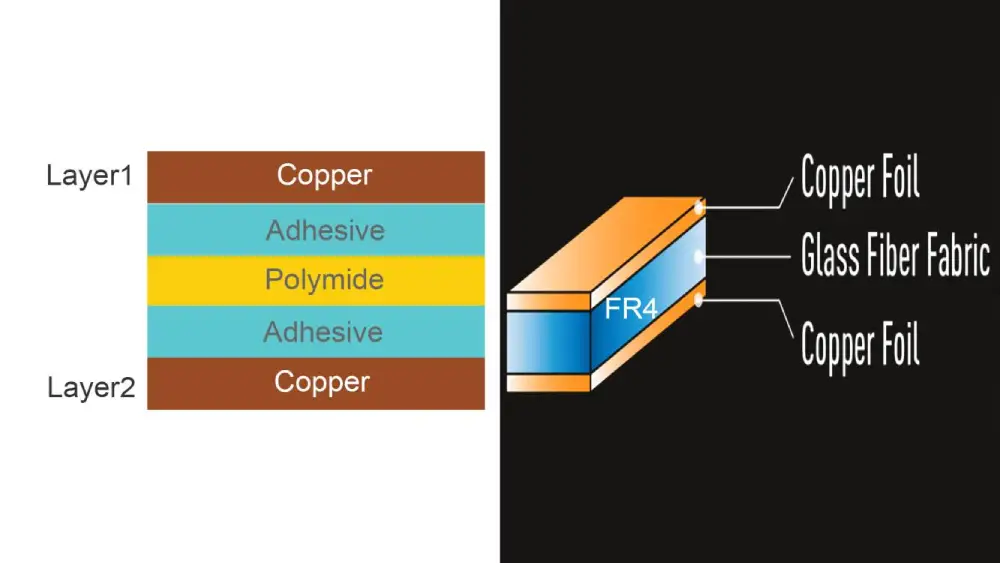
- Thickness Ranges
The fiberglass reinforcement limits how thin FR4 can be manufactured. Common thicknesses range from 2 mils to 125 mils. Without fiberglass, polyimides can made as thin films from 1/2 mil to 3 mils thick. This allows extremely thin, flexible constructions ideal for dynamic flexing applications.
- Flexibility
Polyimide boards are highly flexible, which makes them suitable for applications requiring repeated bending or shaping to fit specific spaces. Their extreme flexibility allows complex geometries impossible to achieve with traditionally rigid FR4 boards. Mobility is improved and installation inside products with space constraints becomes simpler compared to FR4.
- Moisture Absorption
Epoxy-based FR4 absorbs very little environmental moisture, around 0.2-0.5% of total weight. In contrast, polyimide can absorb up to 2% moisture by weight. This does not impact the performance of polyimide circuits, but absorbed moisture must be removed by a baking process before assembly to prevent damage from rapid steam expansion and delamination issues during soldering operations.
- Heat Tolerance
Polyimide has a far higher maximum operating temperature than FR4, rated for continuous use up to 300°C. It resists heat degradation better over time. This means polyimide boards survive long-term in hot environments. The thermal conductivity is also double that of standard glass-reinforced boards.
Further reading: A Comprehensive Guide to FR4 Thermal Conductivity
- Chemical Resistance
In addition to heat performance, polyimide boards provide corrosion and chemical resistance superior to FR4. Their robust polymer matrix protects against fuels, oils, solvents for considerably longer time periods. Without susceptible components like epoxy or glass fibers, polyimide stands up to more concentrated chemical solutions without degrading.
- Durability Under Stress
Vibration resistance and tensile strength are significantly higher in polyimide boards. Flexibility prevents fractures from physical shocks that compromise the integrity of rigid epoxy glass boards. Polyimide better maintains mechanical and electrical reliability over thousands of bend cycles as well as continuous vibration.
The following table lists some specific data to more clearly compare the differences between FR4 PCB and Polyimide PCB:
| PCB Types Properties | FR4 PCB | Polyimide PCB |
| Thermal Conductivity | 0.25 W/mK | 0.2 W/mK |
| Dielectric Constant (at 1 GHz) | 4.25-4.55 | ~3.4 to 3.8 |
| Dissipation Factor (at 1 GHz) | 0.016 | 0.003 |
| Arc Resistance | 125 sec | 143 sec |
| Specific Gravity | 1.8 – 1.9 | 1.3 to 1.4 |
| Water Absorption | 0.2-0.5% | 1-2% |
| Tensile Strength | 70-90 MPa | 200-300 MPa |
| Glass Transient Temperature (Tg) | 130-140°C | >250°C |
Polyimide PCB and FR4 PCB: How to Choose?
The choice between using an FR4 PCB versus a polyimide PCB depends primarily on the application and its specific requirements:
FR4 boards would be the better choice for:
- Cost-sensitive applications where high durability is not required. FR4 is the cheaper option.
- Low-frequency digital circuits that do not generate much heat. FR4 handles moderate temperatures up to about 100°C.
- Rigid boards for products where flexibility is not needed. The fiberglass reinforcement makes FR4 boards dimensionally stable but not flex-friendly.
Polyimide boards would be preferable for:
- Flexible/rigid-flex circuits that must dynamically bend during use. Polyimide PCB has outstanding flex life and fatigue resistance.
Know differences between flexible and rigid-flex PCB, read “Rigid Flex PCB vs. Flexible PCB”
- High frequency analog circuits. Polyimide has a lower dielectric constant and loss for better signal integrity.
- Extreme environment electronics exposed to high temps beyond 150°C. Polyimide survives over 250°C.
- Products with reliability testing like vibration, shock, humidity, or dust ingress. Polyimide boards are more robust.
- Mission-critical electronics demanding the highest durability withthe least risk of failure. Aerospace and military favor polyimides.
In essence, choose economical FR4 for basic interconnect applications without special requirements, while polyimides serve extreme demands needing maximum physical resilience and environmental resistance.
Final Words
Evaluating the contrasts between these two materials in factors like heat tolerance, durability, and mechanical strength is key when determining the optimal selection for an electronics project based on its particular demands and operating conditions. A thoughtful analysis of application specifications alongside Polyimide and FR4’s respective property profiles allows for an informed material call that caters to the unique objectives and constraints at play. With an understanding of the tradeoffs involved, engineers can feel confident specifying the PCB substrate that will best meet their needs and perform as intended within the target device or system.
